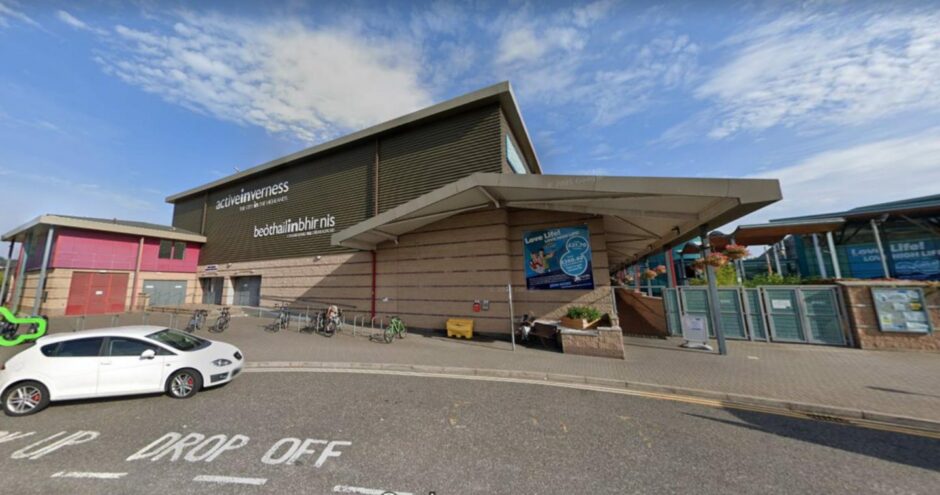The Inverness climbing community has raised fears that a new venue will prove too expensive for families to use.
The Ledge – a bouldering and climbing gym and charity – will soon become the only venue in Inverness for climbers when the well-used wall at the city’s leisure centre is closing after 25 years.
But regular users of the leisure centre’s wall, operated by High Life Highland (HLH), want it to remain open – and have even launched a petition calling for a rethink.
More than 2,000 people have backed the call, which says the climbing community is “deeply disappointed” at the closure of the leisure centre wall without any consultation.
It adds: “This wall has been open for over 25 years and has faithfully served the climbing community, both seasoned climbers but also those new to climbing and trying it for the first time. The climbing wall provides children and young people the opportunity to discover climbing, to enjoy the challenges it brings and to overcome physical and mental barriers. At the moment, there is about a two-year waiting list to join classes.
“Adult and children inductions are in high demand and we feel that two climbing walls would be better able to meet this demand than one.
“We, as a climbing community, feel that High Life Highland should reconsider closing the climbing wall at Inverness Leisure. We feel that there is a need for two climbing facilities in the same way that there are multiple gyms, pools and sports halls in Inverness.”
Closure is ‘best chance of success’ for The Ledge
However, in a letter to campaigners HLH chief executive Steve Walsh said the wall had been operating at a “considerable loss” for most of its lifespan.
In his letter, Mr Walsh said: “High Life Highland has played an unparalleled part in providing a facility to develop the sport of climbing in the Highlands, it is time for us to hand over the baton.”
He also said closing the climbing wall would give The Ledge “the best chance of success” and avoid a situation where both facilities struggle.
But Claire Sutherland, who started the petition, fears the price will discourage people from taking up, or continuing, the hobby.
An HLH annual family membership, which gives access to the climbing wall and all other facilities at HLH sites, comes to £411.60 for two adults and two under-18s.
By comparison, The Ledge’s, fees for two adults and two under-16s £85 per month or £1,020 per year.
The individual adult yearly price is £520, while an HLH membership is £273.60.
‘We’re not getting like for like’
Duncan Chisholm, chief executive of The Ledge, insisted their prices reflect the Scottish average.
“Most people who are involved in the climbing community and have travelled beyond the Highlands to climb in Edinburgh or Aberdeen understand that’s what they cost,” he said.
“It costs that amount to keep the lights on and to pay your staff fairly.”
Ms Sutherland remains unconvinced however, and said: “I think a few people who would have climbed regularly at Inverness Leisure are now going to be climbing less because of the cost.”
While she says the climbing community is excited for the brand-new venue to open, they feel it doesn’t offer the same value as the ILC climbing wall.
“We’re not getting like for like, if anything we’re getting less for more money.”
‘The money goes to help others’
Mr Chisholm argued that The Ledge offers more than the ILC climbing wall.
He said: “We didn’t develop The Ledge in isolation. It is supported by Sportscotland because they and the governing body of climbing recognised there was a real deficit of modern facilities in the Highlands.
“The old Inverness climbing wall has been open for 25 years and uses a very old method to hold up the walls and sadly those panels over the years of operations have degraded to a point where about 25% of the attachments are no longer useable.”
While Mr Chisholm recognises the HLH membership is an “amazing benefit” for climbers, he believes the facilities are too small to accommodate the growing climbing community in Inverness.
He added the pricing will providing funding for community projects, repairs and maintenance.
“As a charity, we have a choice about how that operational surplus will be used,” he said.
“In 2017, when The Ledge charity was formed, we made the choice to support the most vulnerable in our community.
“We built the facilities with wide aspects to it, including community support working with youths at risk and trauma sufferers, so the money goes to help others.”




Conversation